
Citrus peel
Don’t just squeeze lemon over fish and toss out the rind. According to Lauren Popeck RD, LD/N of Orlando Health Physician Group, there’s some great use for lemon rind when it comes to garnishing dishes and kicking up the flavor. There are also some great nutritional benefits hiding in the zest, as well. “You can expect three grams of fiber in two tablespoons of zest, five times more vitamin C in the peel than flesh, and other essential vitamins and minerals, including riboflavin, thiamin, niacin, folate, vitamin B6, vitamin B5, vitamin A, calcium, iron, potassium, zinc, and magnesium,” says Popeck. Her favorite uses for zest: blend into vinaigrette or marinade; toss a piece of peel into smoothies; grate and sprinkle on green beans; blend into yogurt or cottage cheese; stir into oatmeal, cereal, or muffin batter; or add to coffee or tea. Don’t stop with lemons: Use oranges, limes, and even grapefruit for some acidity and flavor with no added calories.

Banana peels
Most of us eat the banana without giving the soft, mushy peel a second thought. Here’s why that’s a mistake: “Bananas contain tryptophan, which boosts serotonin ‘the happiness hormone’ to help with mood regulation and nerve impulses,” says Popeck. A few creative ways to use the peel: First off, go ripe. “Riper peels are softer, thinner, and tastier,” says Popeck. Cook or boil for at least 10 minutes to soften. You can add to smoothies, stir-fries, or soups. Or, you can puree and add to muffin or cake batter. And, for a treat, simply slice and bake a banana with the skin on, she suggests.

Watermelon rind and seeds
You’re likely not giving watermelon enough love. The delicious, red insides make for a refreshing snack or juice, but you’re able to get some powerful nutrients in the rind and seeds, as well, says Popeck. Instead of tossing, cut that white part under the green exterior and use it in your cooking. “It contains the amino acid citrulline, which is converted into arginine, which helps to improve circulation, increase blood flow, improve heart health, boost immunity, boost libido and reduce muscle fatigue.” (A 2016 study in The Journal of the International Society of Sports Nutrition backs this up.) What’s more, it also has vitamin C and B6, to keep your immune system high, she adds. Add watermelon rind to smoothies in the blender; chop and add to fruit salad, salsa, chutney, or slaw; mix into soup with potatoes and carrots; or pickle it. As for seeds, you can roast in the oven. Toss in olive oil and salt, roast at 350° for 10 to 15 minutes. Then sprinkle on salads or add into trail mix, she says.

Broccoli stalks
You’re probably used to eating the heads of broccoli, but don’t forget about those stalks, says Popeck. “The stalk contains sulforaphane, a phytochemical antioxidant that has anti-inflammatory properties, protects cells from DNA damage, inactivates carcinogens, and inhibits tumor blood vessel formation,” she says. Here’s some cooking inspiration: Peel, slice, or shred stalks, and eat raw on salads or with dip. If raw veggies aren’t your thing, you can cook them, too. Steam, roast, or sauté them, she says. Add to soup or puree them to add to sauce, pesto, hummus or baby food.

Pineapple core
Once you hit the core when cutting into a pineapple, don’t throw it in the garbage. You can use pineapple core for all kinds of recipes, and there are tons of vitamins and minerals hiding within. “Pineapple contains bromelain, a protein-digesting enzyme; it has anti-inflammatory properties, can reduce nasal and sinus inflammation and it can mitigate arthritis and muscle pain,” says Popeck. What’s more, “it also has anticoagulant properties, meaning it breaks down the blood clotting protein fibrin, for a potential cancer-fighting effect,” she adds. To use pineapple core: Chop and add to fruit salad, slaw, chutney, or salsa; blend into smoothies[ cut into cubes and freeze for later use; or simply add to water, tea and even sangria to increase flavor. You can also dice into small pieces and add to stir-fry, sauté in olive oil, add to Greek yogurt for savory dessert or use it as a seafood marinade.
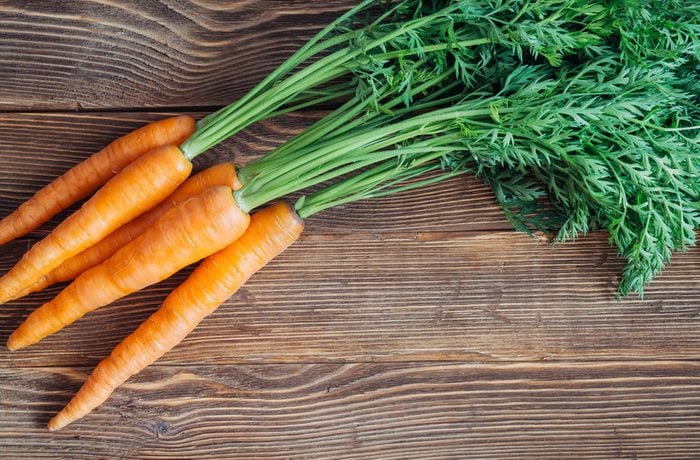
Carrot tops
When you’re munching down on a crisp fresh carrot, don’t stop at the green stem-y top. (Rabbits don’t, so why should we?) This part of the carrot is perfectly safe to eat, and it makes a great herb substitute in any dish you’re already using carrots for. If you’re not a fan of their bitter, astringent taste, consider boiling the carrot tops for soup stock.
If You See White Stuff on Your Baby Carrots, This Is What It Is

Onion skins
When skinning an onion, hold onto those scraps. In the skin, there’s a high content of “quercetin, a flavonoid polyphenol-type of phytonutrient that fights inflammation, reduces blood pressure, prevents arterial plaque, and keeps the heart healthy,” says Popeck. Red onions contain more quercetin than yellow ones. “Add whole onions to soup, stock, chili or sauce, then discard skins before eating,” says Popeck.

Celery leaves
You might not realize, but celery stalks have leaves, and you can actually use them when cooking. “The leaves are rich in magnesium, calcium, and vitamin C, and you can use celery leaves in salads, as part of vegetable stock, or a garnish,” says Ilyse Schapiro MS, RD, CDN. Simply pick the leaves off of the stems, place them in a damp paper towel and then inside of a Ziploc bag to save, she says. “You can also use them in a chickpea salad with shaved onion and a vinaigrette,” she suggests.

Swiss chard stems
Don’t just eat the leaves—those stems are pretty important in providing real nutritional value, too, says Schapiro. “As they’re high in glutamine, they can improve your immune system,” she says. Also, as a leafy green, they contain great iron and fiber, too. To roast Swiss chard stems, Schapiro recommends preheating the oven to 375°F, rinsing the stems and patting them dry. “Then, simply use one to two teaspoons of olive oil to coat the bottom of a baking dish and lay the stems down in a single layer. After laying the stems down, drizzle with a teaspoon of olive oil and sprinkle with salt. Cover the dish with foil and place the dish in the oven and bake for ten minutes, then remove the foil. “Finish baking for about 20 more minutes until the stems are tender and starting to brown,” she explains.

Kiwi skin
If you never thought you could literally eat kiwi as you would a peach, think again. That skin is edible, and in fact, really, really good for you. “Kiwi skin, similar to citrus rind, contains much vitamin C, and in fact, it’s also higher in fiber than the rest of the fruit,” says Kelly R. Jones MS, RD, CSSD, LDN. Of course, that rough, tickly skin isn’t for everyone, so if you don’t like the texture, try adding a whole kiwi to a smoothie to mask the taste of the skin, she recommends.
You’ve Probably Been Storing These 12 Foods Wrong this Whole Time
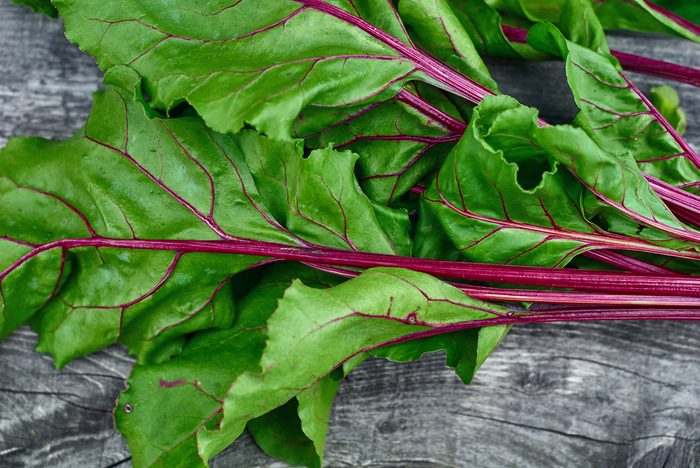
Beet greens
You could make an entire beet salad using only beets! Beet greens are similar to Swiss chard in terms of taste and nutritional value. They’re rich in vitamins A, C and K, and they also contain a phytonutrient that can benefit eyesight, according to Food Network Canada. Sauté them with other leafy greens to add a slightly sweeter flavor.
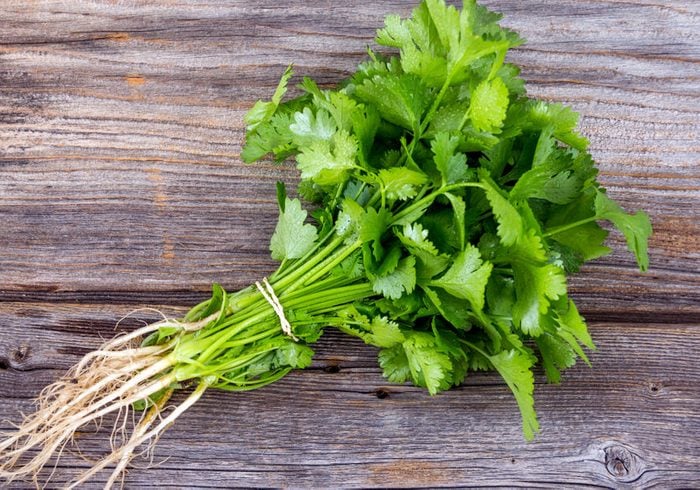
Cilantro stems
We know not everyone is a fan of cilantro. But if you love cilantro leaves, you may love cilantro stems even more; they’re more potent than their leafy counterparts. The stems also have the same nutritional value, with anticancer properties and nutrients that boost skin and eye health. Use them in recipes or as a garnish just as you would regular cilantro.
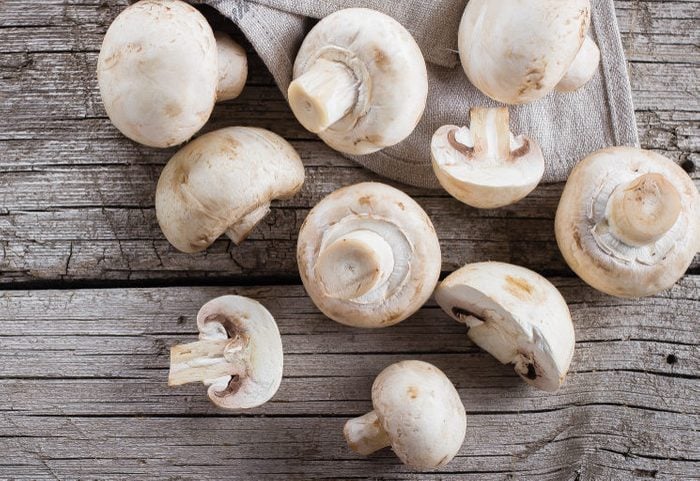
Mushroom stems
It’s easy to just focus on mushroom caps when you’re cooking and forget about the stems, but they’re just as safe to eat as the rest of the fungus (provided you’re using one that isn’t poisonous). Plated.com recommends simmering them for an earthy vegetable stock, pickling them for sandwich fillings, or finely chopping them to make duxelles, a mixture of mushrooms, herbs and onions.
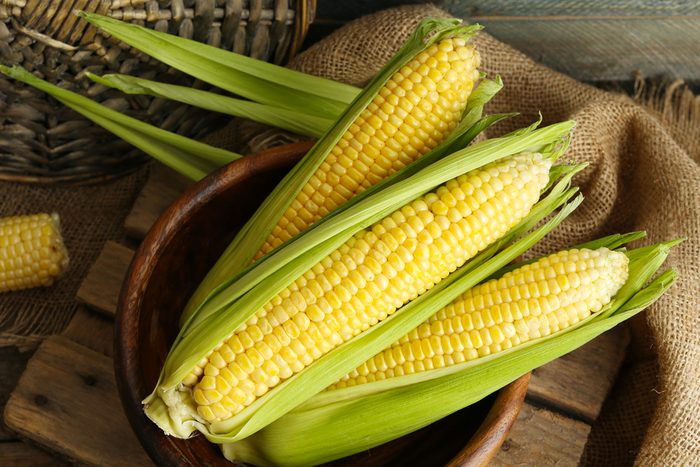
Corn cobs and husks
OK, we’re not saying you should eat the cob once you’re done with the corn. However, you can still put it to good use. Simmer raw or roasted corn cobs with salt to make homemade corn broth, the perfect base for some truly corny corn chowder. And don’t toss those corn husks either. Dry them in the sun for a few days (taking them inside overnight), and you’ve got the perfect wrapping for tamales.
For more wellness updates, follow The Healthy on Facebook, Instagram, and Twitter. Keep reading: